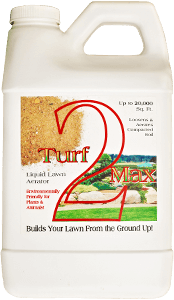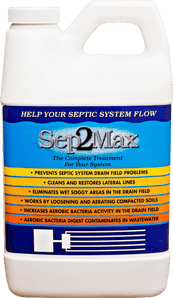Learning how to prevent waterlogged soil is a must for any professional turf manager. The manager is under extreme pressure to maintain soil percolation in order to avert any rain delays or cancellations. Not only is revenue lost due to cancellations, the turf can be affected due to the standing water.
Healthy Aerated Soils
A common characteristic of healthy soils is the ability to efficiently uptake oxygen into the root zone and to exhaust carbon dioxide. Soils must drain and breathe in order to sustain plant growth. The gaseous exchange in and out of the root zone plus the intake and evaporation of water is essential for long-term plant health and soil microbes.
Aerobic soil microbes are essential for sustainable plant growth. The microbes convert atmospheric nitrogen and oxygen into a usable plant food source. Conversely, a waterlogged soil will initiate an anaerobic environment within the root zone thereby drowning plant roots and the soil microbes.
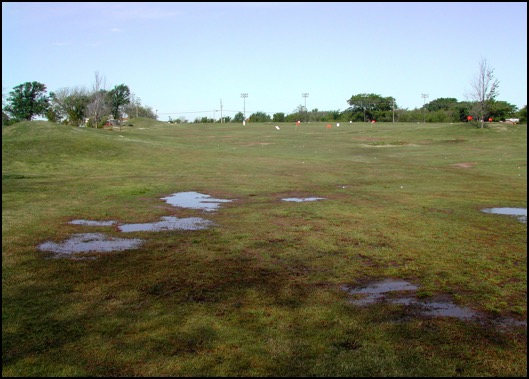
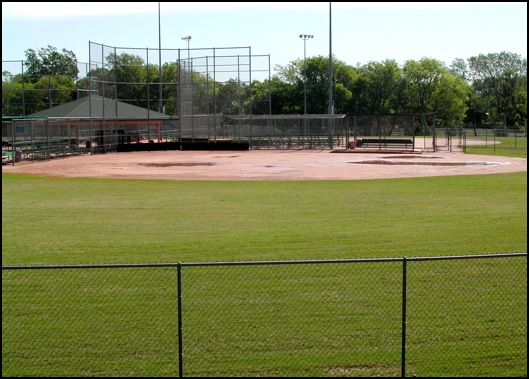
Saturated Soils
When the vast majority of the soil pore space is filled with water, the soil is considered saturated. Aerobic microbial activity decreases in compacted soils due to less oxygen penetrating through the soil. In severe cases, such as prolonged standing water or extremely compacted soils, the microbes will die or become dormant, terminating plant nutrient production.
The problem is the lack of soil pore space in the topsoil. A healthy soil should contain approximately 50% minerals and organic matter; and roughly 25% air and 25% water.
Problems start to occur when the soil clay mineral percentage increases. Soil minerals are made up of sand, silt, and clay. Therefore the higher the percent of clay, the smaller the pore size.
Why? Imagine having three mason jars one filled with clay, another with silt, and the latter with sand. The jar with the clay will pack tightly thus compressing the pore space. The jar with silt will compress somewhat, but since the particles are larger, more space will remain after compression. Obviously, with sand, compression is limited, thus the pores are much larger.
What problems are associated with compacted soil?
- Limited pore space impedes water infiltration and percolation affecting plant growth
- Limited nutrient movement — results in malformed roots
- Reduced water movement — contributes to saturated soil
- Increased bulk density — saturated soil, impeding aeration and uneven plant growth
The Remedy
The solution to prevent waterlogged soil is to promote the formation of water stable aggregates. The addition of organic matter certainly is a tried and true method, especially for flower beds. Needless to say, on a large scale, this can be expensive and time-consuming. The remedy for this problem is applying Turf2Max liquid aeration once or twice per year.
Official Test Site: Arrowhead Sports Complex Broken Arrow, OK
The two photos below were taken after a significant rain event. The left photo was taken in early May 2001 one day after a 0.55-inch rain before Turf2Max was applied to any of the fields. The right photo was taken one day following a 0.69-inch rain event six weeks after Turf2Max application.
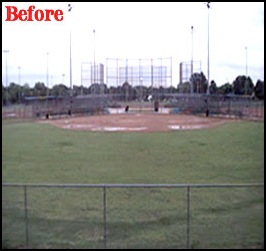
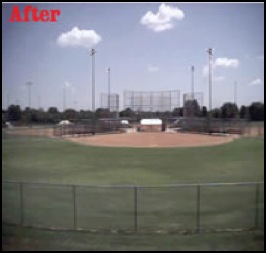
The following test was performed at this sports complex to determine what effect if any Turf2Max had on severely compacted soils.
The Role of Turf2Max on Landscape Drainage on Compacted Soils
Introduction
This test was performed to investigate whether Turf2Max can support the claim “loosens and aerates compacted soils”. Two tests were selected to determine if Turf2Max can support the claims.
It is widely believed that soils with high bulk density and high soil strength reduce infiltration and percolation thus increasing runoff and soil erosion. Increased soil compaction reduces pore space thereby increasing bulk density or weight of dry soil in a defined space. Like bulk density, soil strength, or its resistance to penetration and displacement, increases with compaction.
Test Site
Arrowhead Softball Sports Complex located in Broken Arrow, OK was selected because the Turf Manager, Jim Hillman had recurrent waterlogged soil problems for the last several years, following ordinary rain events. Game cancellations were common because the infields were percolating slowly, thereby prolonging the drainage and drying process.
The sports complex is recognized nationally as one of the best in fastpitch softball, except for the fact of the infield drainage problem. It was recommended to Jim Hillman that the way to solve the problem was to construct a French drain system for all eight fields. The cost estimate for this project was $4200 for each field.
Application
Turf2Max was applied on all eight fields on May 22, 2001, at the standard application rate. A second application was done on June 1, 2001.
Tests Performed
- Bulk density – Core samples were taken with a 7-inch diameter sampler to a depth of 8 inches. The sample was dried to remove water and weighed. Bulk density was calculated by dividing the dry weight of a sample by its volume.
- Penetration resistance – Soil strength is a measure of the penetration resistance of a soil. A handheld recording cone penetrometer (Rimik-Agridry CP20) with a 047-inch diameter cone was used to measure soil strength. The penetration resistance is a measure of a soil strength and resistance to penetration by root tip elongation.
Results
Core samples from three fields, 1,2, and 4 were analyzed. The average reduction in bulk density for all three fields was-18.63%. The average reduction of penetration resistance was-32.90%.
Interpretation
Jim Hillman noted a remarkable increase in drainage from all eight fields. Several rain events occurred since application and, in every case, the fields drained within a few hours. Field 4, in particular, was troublesome before the application.
Standing water developed between first and second base after a significant rainfall. Before the Turf2Max applications, water would stand in this area up to 3 days.
Field 1 between second and third base was another trouble area. Field 2 in front of the second base had persistent problems beyond the first day. Since the application of Turf2Max, no standing water problems beyond the first day have occurred. In some cases, a significant change occurred within one to three hours and play that was impossible before Turf2Max resumed.
Conclusion
Turf2Max reduced soil bulk density and soil strength enough to make a remarkable difference in infiltration and percolation. This test supports the claim that Turf2Max “loosens and aerates compacted soils”.
